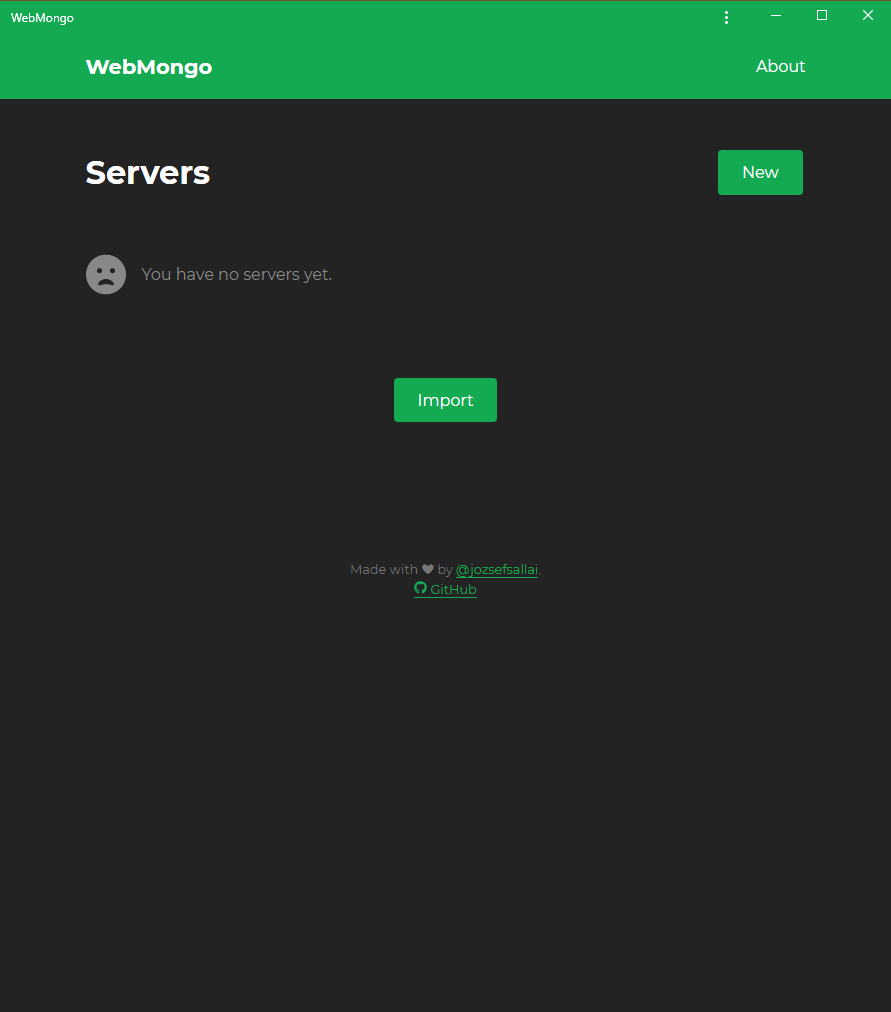# WebMongo Documentation
Welcome to the official documentation of WebMongo - your new favorite web UI for MongoDB. Using WebMongo you can view and manage an infinite number of MongoDB web servers from any device, without risking the security of your server connection strings.
# How It Works
WebMongo approaches storing the list of your servers in a different way.
Instead of storing your data on a centralized remote server, it stores your
server list in your browser's localStorage. This means that there is no way
someone can ever access your details unless they have direct physical access to
your device. Even so, you can always lock your session with a passphrase,
making it even more secure.
Since data is not stored on a remote server, you have to do the syncing manually. Luckily, WebMongo was designed with easy syncing in mind. You can export a passphrase-protected, encrypted file containing all of your connection strings and import it on a different device.
You can read more about WebMongo, the motivation behind the project, and the way it functions in this article on dev.to.
# First Steps
You can use WebMongo in two different ways, the only difference is how you start. You can either:
- use the official production app, or
- deploy your own instance.
Regardless of your choice, you will be met with the following screen:

From here, you can proceed to add a server.